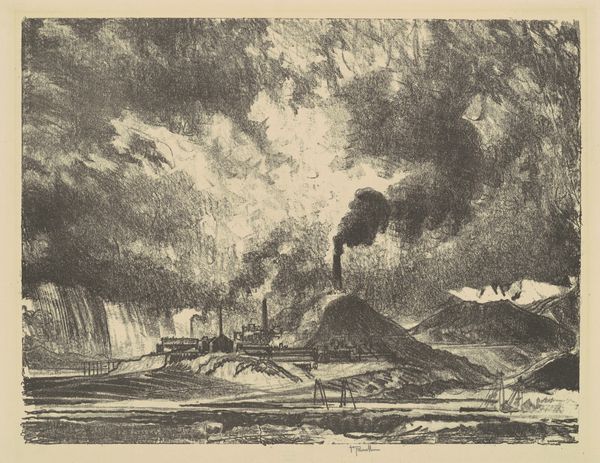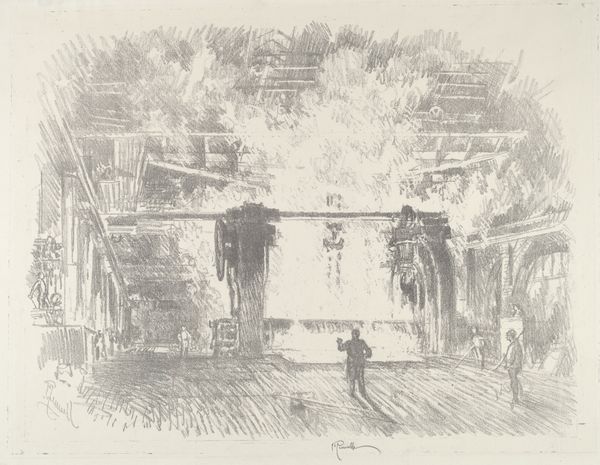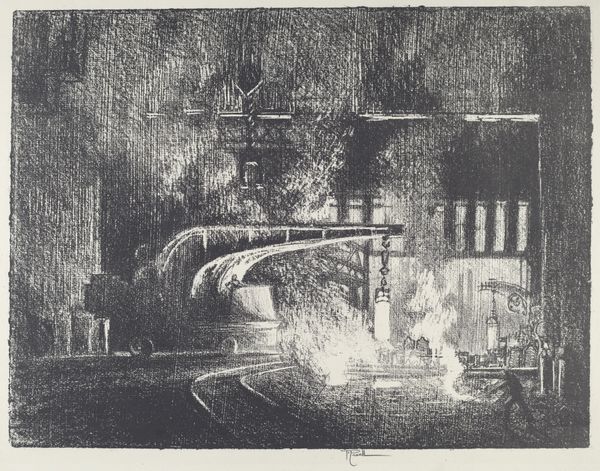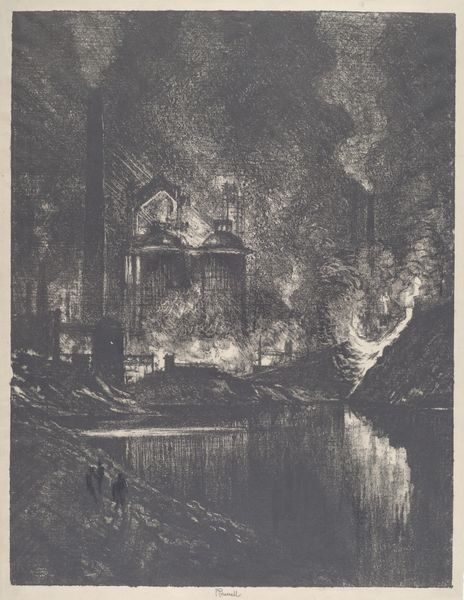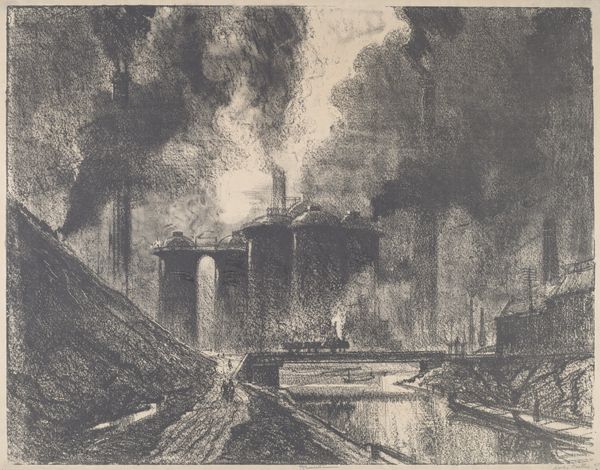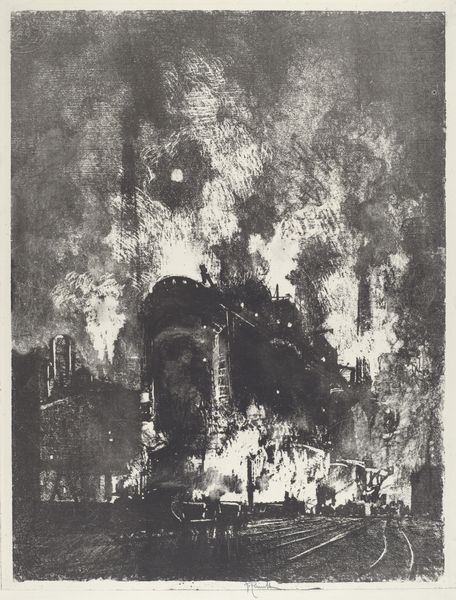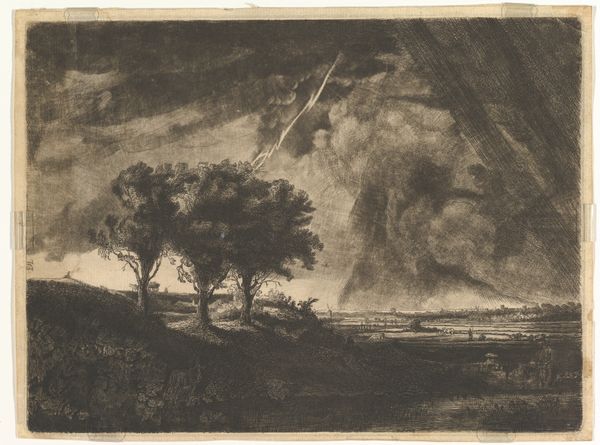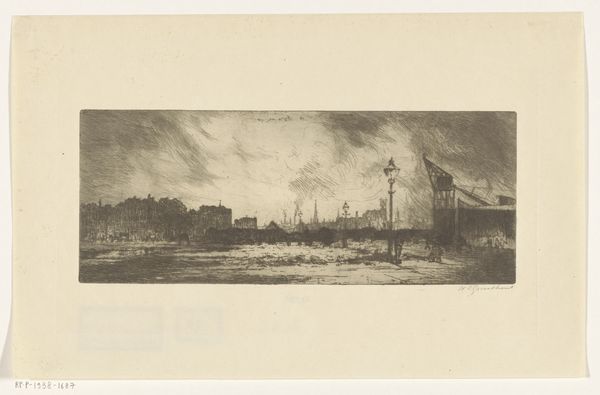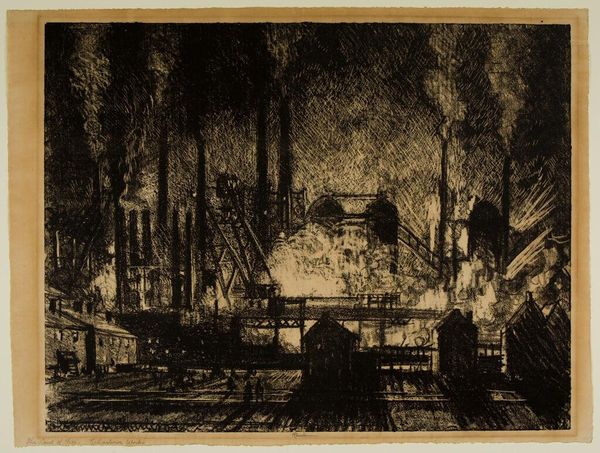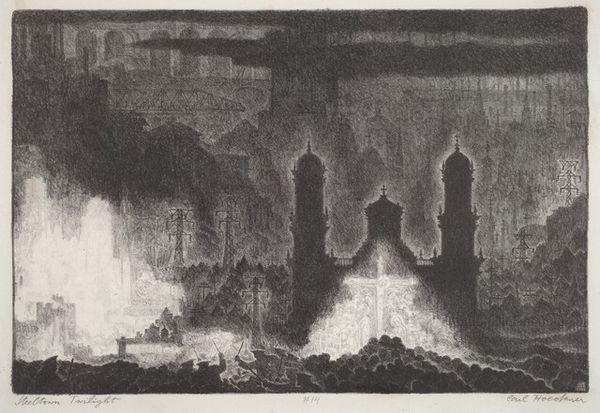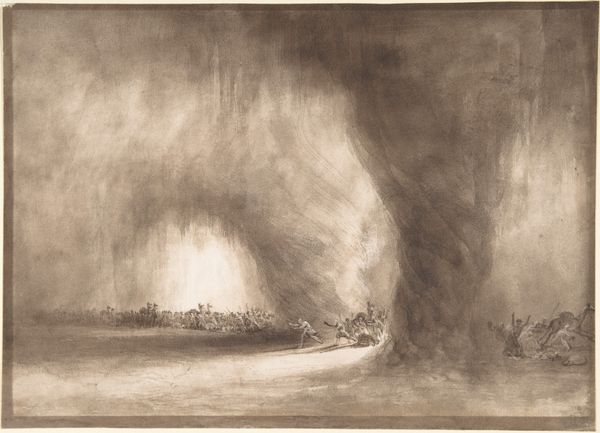
drawing, print, graphite
#
pencil drawn
#
drawing
# print
#
pencil sketch
#
landscape
#
social-realism
#
pencil drawing
#
graphite
#
realism
Dimensions: image: 444 x 559 mm sheet: 520 x 660 mm
Copyright: National Gallery of Art: CC0 1.0
Curator: This print, created circa 1922 by Roderick D. MacKenzie, depicts the intense scene of "Steel Being Poured Into Open Hearth Furnace." It’s primarily rendered in graphite, a testament to the industrial age it portrays. What’s your initial take on this powerful image? Editor: Stark. Immediately I see a brutal vision, all those smudged lines and the oppressive greyscale atmosphere evokes the immense heat, labor and, dare I say, the inherent danger of that industrial setting. Curator: Absolutely. MacKenzie captures that raw, material transformation so effectively. Notice the emphasis on the equipment itself, the sheer mechanics dominating the space. It pushes us to think about steel not just as a product, but as the result of intense physical labor and intricate processes. The drawings themselves manifest labor intensive activity. Editor: Agreed, and it makes me think about whose labor exactly? This isn't just about admiring industrial progress; it’s a glimpse into the lives of the working class. The near-silhouette figures on the edges of the light suggest how industrial progress occurs via social costs, often hidden or deliberately overlooked. It’s worth asking whose perspectives, narratives, and bodies have been historically marginalized? Curator: The social-realist style chosen only enhances this perspective. The print is really inviting to investigate the manufacturing techniques involved. From the design of the furnace to the means of conveying the molten metal, the materials of the infrastructure receive an analytical scrutiny that reveals this reality in great detail. Editor: And to remember that in 1922, after the First World War ended and during the Roaring Twenties, industries experienced unprecedented growth but workers still had very limited access to basic needs or safety measures. This scene, fiery and dramatic as it is, reflects deep economic divides. MacKenzie compels us to reflect on that imbalance. Curator: Ultimately, his study invites us to critically look at the interplay between progress, industry and the humans shaping these massive materials. Editor: Yes, exactly. A harsh look into the making of our modern world and those whose labor underpins it.
Comments
No comments
Be the first to comment and join the conversation on the ultimate creative platform.
